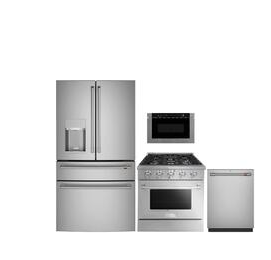Industrial fryers. Do you know what the secret of a good fry is?

It's critical to acquire a superb frying that gives the meal an unrivalled taste so that the restaurant's customers appreciate it. The kind of oil used, the temperature, the fryer, and, of course, the sort of food we use all play a role in achieving superb frying.
How to get a good fry?

A decent frying must be guaranteed by a restaurant fryer, an industrial gas fryer, an industrial electric fryer, or an industrial oil fryer. The following are the keys:
Correct oil temperature
Temperature is critical since it is the primary source of oil degradation. There is also a myth that frying should begin when the oil starts to smoke, since this is when dangerous compounds begin to form.
The meal should be cooked at a temperature of 150 to 185 degrees Fahrenheit. All of the oil must be the same temperature. With a wooden spoon, we may extract it and homogenise the mixture.
Is that correct?
The oil must be at the same temperature throughout, and when you remove it, the surface and the temperature below must be the same. If not, we may eliminate the sentence.
Finally, the container or fryer plays a critical role in ensuring that the food is cooked to perfection. The product will burn if it stays in touch with the bottom, but it will also diminish the number of times the oil is utilised.
It's also worth noting that the bucket must be filled with the quantity of oil recommended by the manufacturer for the fryer tank, since any less would result in an unwarranted rise in temperature.
Do not add new oil

Never combine various oils or add a fresh one to an old one in the fryer to enhance the volume. The oil that has been left over may be kept in metal containers with a cover to keep out air and moisture.
Even if clean oil is introduced, burned oil does not regenerate because it breaks down into other compounds when it comes into contact with the old oil. The most usual method is to change the oil when it begins to darken, even if it seems to be clear.
Add salt after frying
Another crucial notion for effective frying is the amount of salt used in the process. It's best to apply it at the conclusion of the frying process, so the salt grains stick to the already browned and cooked surface.
The salt permeates the meals if they are salted before or during frying, and they may be undone, as in the case of. Furthermore, if they are salted during frying, some of the salt will fall into the hot oil, sink to the bottom of the fryer, and cause the frying oil to degrade quicker, resulting in worse quality cooking later.
The oil must cover the entire food
The dish should be fully covered with oil. Otherwise, the frying would be uneven, with one side burning and the other being raw. Similarly, if we want to extend the life of the oil, we must avoid multi-product fryers and keep thorough cleanliness.
Fryer Recommendations

We must examine the capacity, fuel, and oil recovery while purchasing a fryer, among other things. There are several types of fryers depending on how much oil they consume, whether they are table or floor models, and where they may be placed based on the available space.










